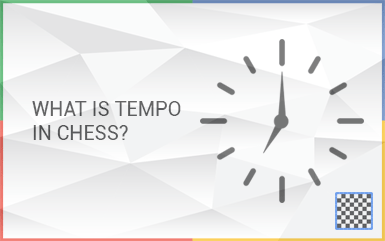What is Tempo in Chess?
What Is Tempo in Chess?
Tempo is a fundamental concept in chess that often goes unnoticed by beginners but is critical for more advanced players to understand. In simple terms, a tempo refers to the “time” or “turn” it takes to make a move. Gaining tempo means that you can achieve a goal more efficiently, while losing tempo means that you are giving your opponent time to improve their position. Understanding how tempo works, and how to gain or lose tempo deliberately, can significantly enhance your chess skills.
In this article, we’ll break down the idea of tempo in chess and explore how it impacts different stages of the game, from the opening to the endgame. We’ll also dive into the difference between tempo and initiative, as well as offer actionable tips on how to use tempo to your advantage.
How Does Chess Tempo Work?
In chess, tempo is measured by the number of moves it takes to accomplish a goal. Gaining tempo means making moves that advance your position while forcing your opponent to waste time, often by responding to threats or repositioning pieces inefficiently. Losing tempo, on the other hand, usually happens when you move the same piece multiple times unnecessarily or fail to keep up with your opponent’s pace of development.
For example, if you attack your opponent’s queen with a minor piece, and they move it out of harm’s way without improving their position, you’ve gained a tempo. Conversely, if you move your queen early and it gets chased around by your opponent’s pieces, you’ve lost tempo.
The Importance of Tempo in Chess Strategy
Tempo is especially important in fast-paced games and tactical battles. In the opening, tempo helps you quickly develop your pieces and control the center. In the middlegame, gaining tempo can help you launch a more effective attack or defend against threats. In the endgame, tempo often decides the winner in situations where precise positioning and timing are crucial (such as pawn races).
Here are a few reasons why tempo is crucial:
- Faster Development: Gaining tempo allows you to develop your pieces efficiently and seize control of key squares.
- Initiative: When you gain tempo, you often maintain the initiative, or the ability to dictate the pace and direction of the game.
- Positional Superiority: If you consistently gain tempo, you force your opponent into a defensive stance, weakening their overall position.
How to Gain Tempo in Chess
Gaining tempo involves making moves that not only improve your own position but also force your opponent to react in a way that is less efficient for them. Here are some ways to gain tempo:
- Attacking Unprotected Pieces: By threatening your opponent’s pieces, especially valuable ones like the queen, you force them to react, allowing you to improve your position while they scramble to protect theirs.
- Developing Pieces with Purpose: Always aim to move pieces to squares where they influence multiple parts of the board. Avoid moving the same piece multiple times unless absolutely necessary.
- Avoiding Passive Moves: Moves that don’t challenge your opponent or don’t improve your position are a waste of tempo. Always aim to make every move count.
What is the Difference Between Tempo and Initiative in Chess?
While tempo refers to the time it takes to make a move, initiative refers to control over the game’s flow. When you have the initiative, you’re in the driver’s seat, forcing your opponent to react to your moves. Gaining tempo can lead to gaining the initiative, but the two are not the same.
For example, even if both players are making moves with equal tempo, one player might have the initiative because their moves are more aggressive or forceful. Conversely, you could have gained tempo but lost the initiative if your opponent launches a surprise attack that forces you to respond defensively.
Examples of Tempo in Famous Chess Games
Understanding tempo becomes clearer when looking at historical games where gaining or losing tempo was pivotal. For instance, in many grandmaster-level games, a player gains tempo by forcing their opponent to retreat or defend pieces unnecessarily, giving them a developmental or attacking advantage.
A famous example is from Bobby Fischer’s games, where he was known for gaining tempo during the opening and quickly transitioning into aggressive attacks that left his opponents on the back foot.
Losing Tempo: When Is It Acceptable?
While gaining tempo is ideal, sometimes losing tempo is strategically necessary. This often happens in positional play or endgames, where precise timing is more important than quick development. For example, in zugzwang positions, a player may be forced to lose a tempo (a waiting move) to make their opponent weaken their position.
How to Lose Tempo on Purpose (Waiting Moves)
In some positions, losing tempo can actually be a strategic move. In the endgame, you may deliberately make a waiting move to force your opponent into a weakened position, especially in zugzwang, where any move they make worsens their situation.
One common example is in king-pawn endgames, where the idea of opposition comes into play. By losing tempo, you can often force your opponent to move their king away from a critical square, allowing you to gain a decisive advantage.
Tempo in the Middlegame vs. Endgame
In the middlegame, tempo is often about piece activity and tactical threats. Gaining tempo through an attack, or threatening a piece that forces your opponent to react, can be the key to unlocking a strong initiative.
In the endgame, tempo is often about precise maneuvering. Pawn races, king activity, and opposition are all areas where gaining or losing tempo is crucial. One wrong move in the endgame can result in the loss of tempo, and consequently, the game.
Common Mistakes That Lose Tempo
Beginners often lose tempo by moving the same piece multiple times in the opening, neglecting development, or making passive moves that don’t challenge their opponent. Here are a few common mistakes:
- Moving the queen too early and being forced to retreat it.
- Shuffling pieces back and forth without a clear plan.
- Failing to develop all pieces, leaving them inactive while the opponent gains space.
Tempo in Various Chess Openings
Many chess openings are designed to either gain tempo or minimize tempo loss. For example, gambits like the King’s Gambit or the Danish Gambit often sacrifice material for rapid development, aiming to gain tempo by forcing the opponent to respond to immediate threats.
How to Counter Your Opponent’s Tempo Moves
If your opponent is gaining tempo and you’re falling behind, consider moves that slow down their progress without losing material or position. Counter-attacking, exchanging pieces to simplify the position, or finding solid defensive moves can neutralize their tempo advantage.
Conclusion: Mastering Tempo in Chess
Tempo is a subtle but crucial element of chess strategy. Whether you’re playing a rapid, blitz, or classical game, understanding how to gain and lose tempo can give you a competitive edge. By focusing on efficient development, avoiding unnecessary moves, and maintaining the initiative, you’ll find yourself improving not only your tempo but your overall chess skills as well.
By mastering the art of tempo, you can control the pace of the game, dictate your opponent’s moves, and ultimately steer the game in your favor. Good luck, and may your future games be full of well-timed moves!




 Protected by Patchstack
Protected by Patchstack
0 Comments